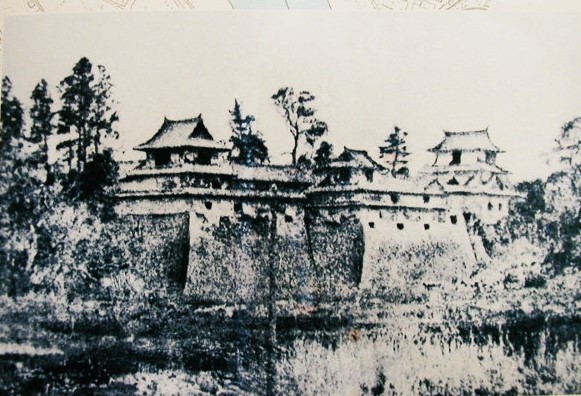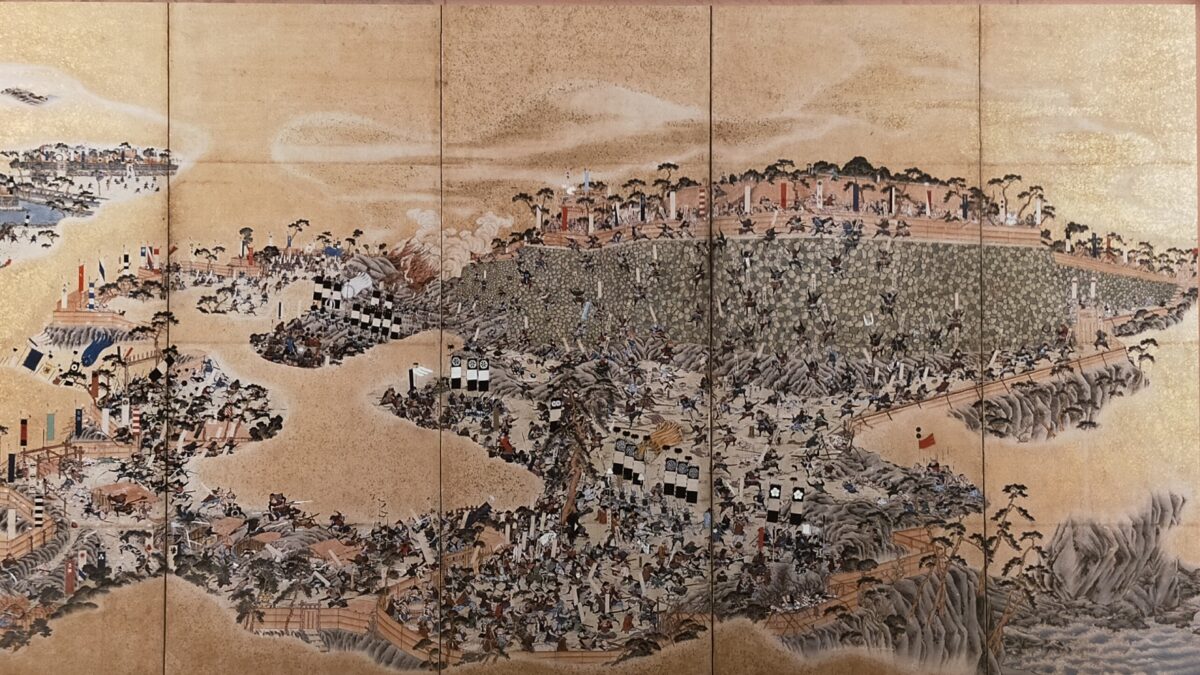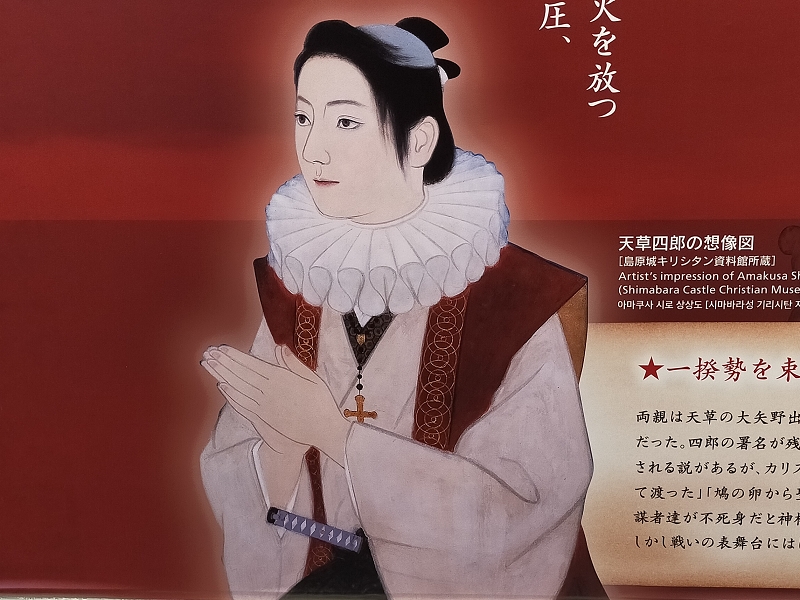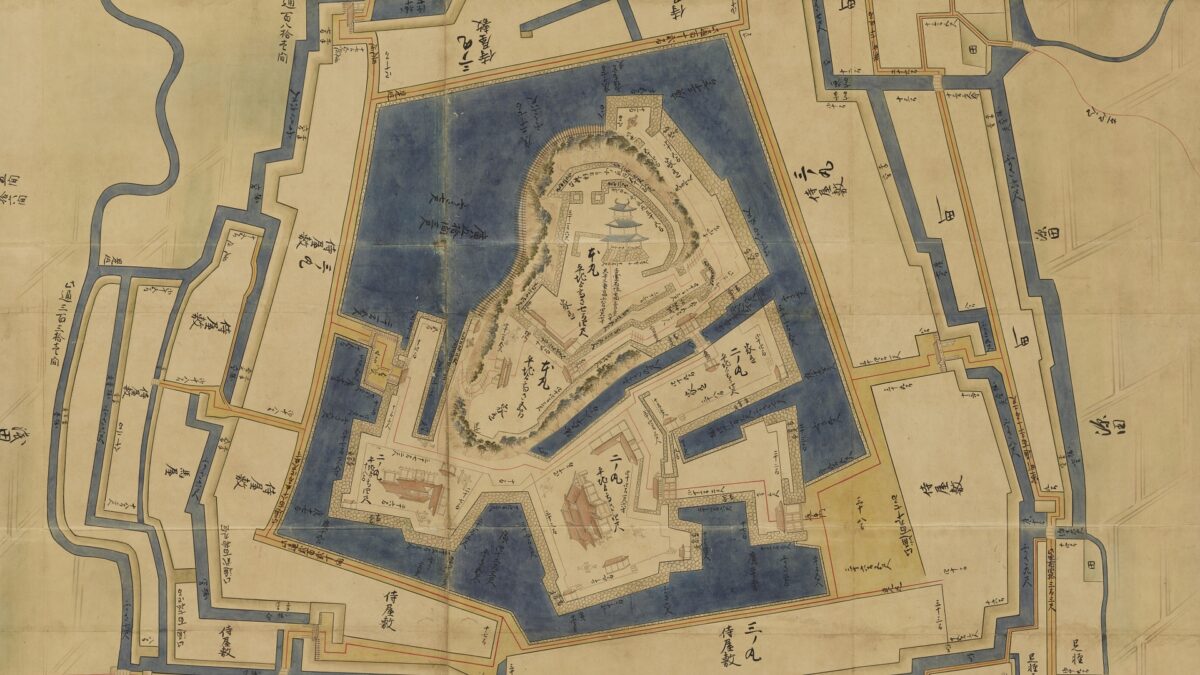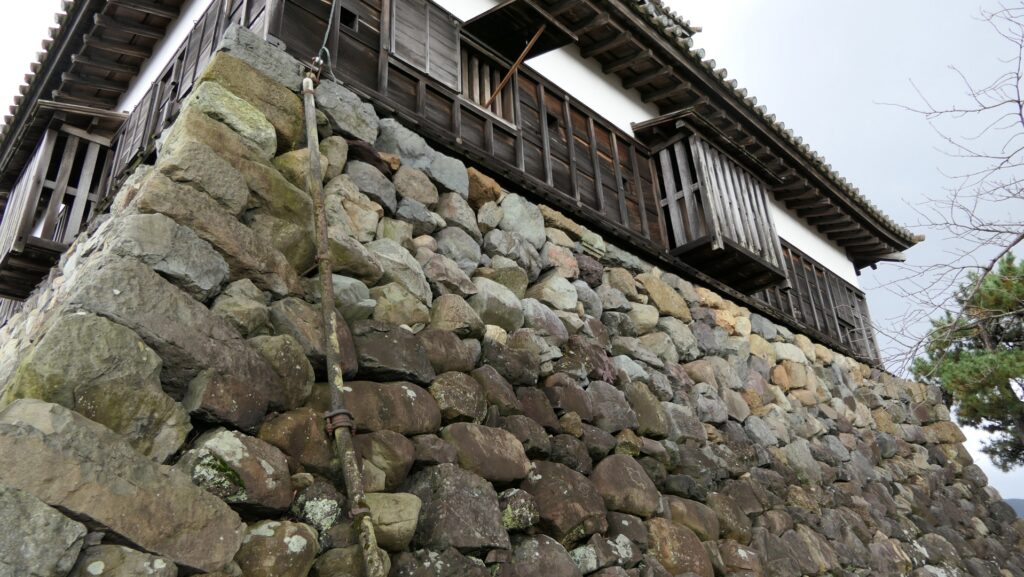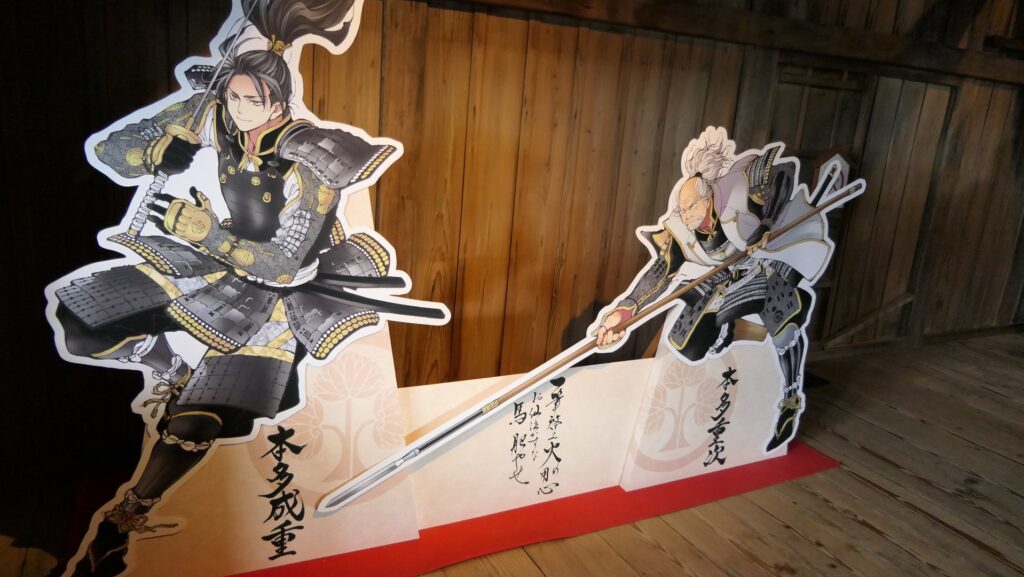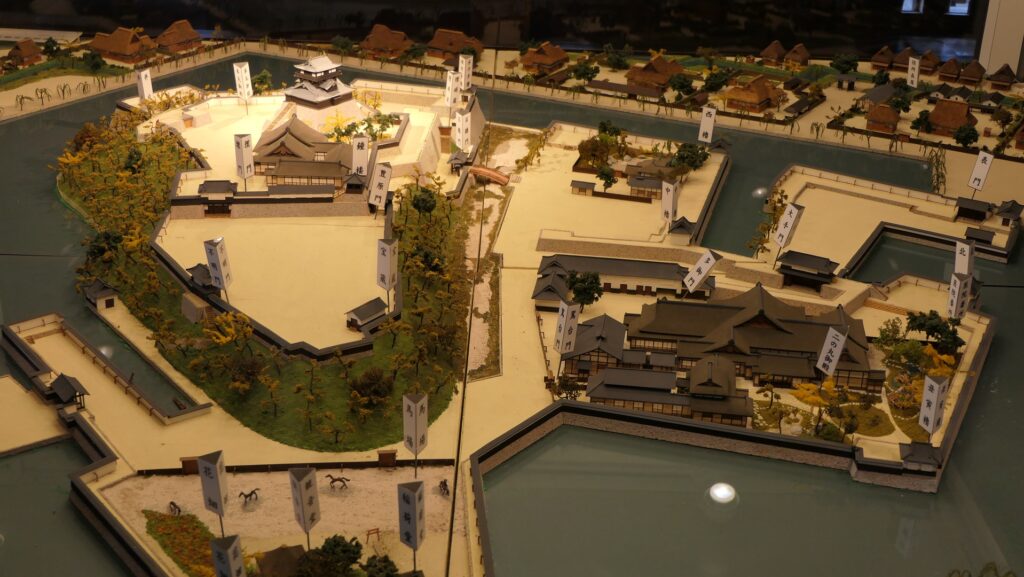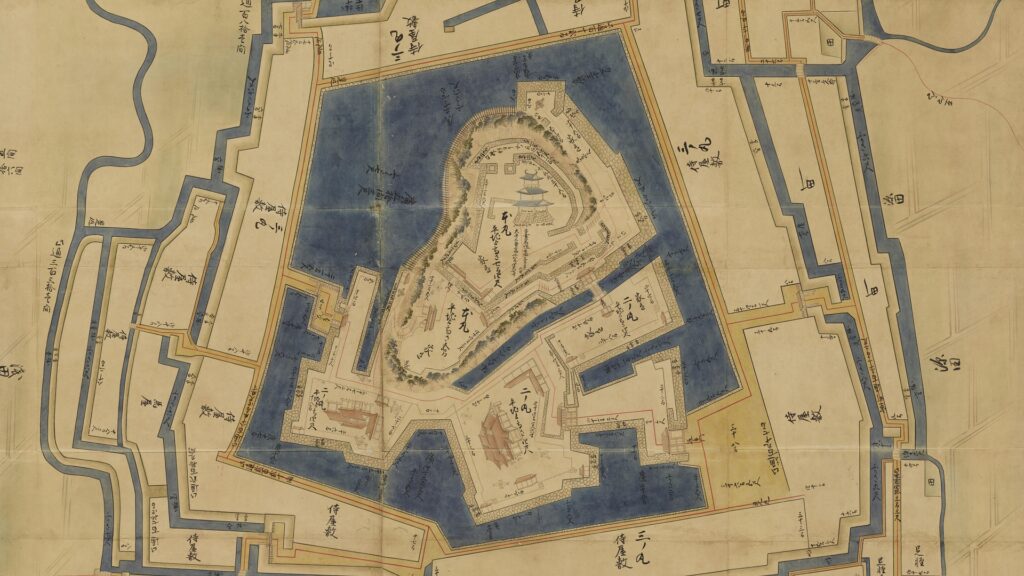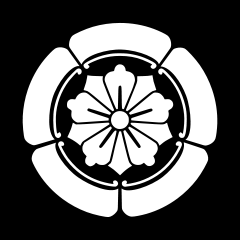Location and History
Debatable ground among Great Warlords
Kurume Castle was located in the Chikugo Province which is now the southern part of Fukuoka Prefecture, in the Kyushu Region. In the late 16th Century, during the Sengoku Period, two great warlords got the power in the northern Kyushu Region. One of them was the Otomo Clan in the Bungo Province, in the east of Chikugo Province. The other was the Ryuzoji Clan in the Hizen Provence, in the west of Chikugo Province. As a result, Chikugo Province was scrambled by the two warlords. During that period, a fortress, called Sasahara Castle, was built in the same place as the later Kurume Castle. The lords of the castle changed quite often because of the context.
The range of Chikugo Province and the location of the castleHidekane Mori and Arima Clan complete Castle
During the unification of Japan by Hideyoshi Toyotomi, Hidekane Mori was promoted as the lord of the castle in 1587. He renovated the castle, which was renamed Kurume Castle. However, he was fired after losing the battle of Sekigahara in 1600. Instead, the Tanaka Clan was transferred from Okazaki Castle to Yanagawa Castle in the Chikugo Province. Kurume Castle became a branch of Yanagawa Castle and was eventually abandoned in 1615 due to the Law of One Castle per Province by the Tokugawa Shogunate. The castle was revived in 1621 by the Arima Clan, the lord of the Kurume Domain, after the Tanaka Clan was also fired because they had no successors. The Arima Clan completed Kurume Castle and governed the domain until the end of the Edo Period.
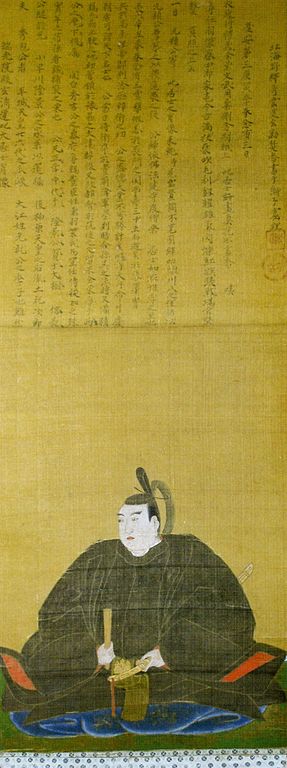
Kurume Castle was located beside the Chikugo River flowing from the north to the west of the castle. The eastern side of the castle was surrounded by tripled water moats tripled such as the Chikuzen-bori Moat. The castle town was built in the south of the castle. Four enclosures divided by water moats; the Outer, Third, Second, Main Enclosures were built in a line next to the castle town towards the north. If enemies wanted to capture the castle, they had to first attack the castle town one enclosure at a time. Only the Main Enclosure was made with high stone walls while the others were made with soil. The Main Enclosure was on a hill at in the northernmost part of the castle and had the Main Hall and seven turrets to protect it. These turrets all had three stories and were connected by two-story row-style turrets, called Tamon-Yagura, which looked very spectacular.

Shinto affects Domain and Castle
The governance of the Kurume Domain was generally stable in the peaceful time of the Edo Period. Shinto, one of the major religions in Japan, spread during this period. One of its main doctrines was to respect the Emperor, which led to the movement for imperialism and exclusionism. The movement eventually resulted in the one against the Tokugawa Shogunate at the end of the period. Many Shinto believers lived in Kurume, and communicated with others in other areas. For example, Hikokuro Takayama, who was a famous loyal supporter of the Emperor, visited Kurume three times and died there in 1793. Maki Izumi, who was the priest of the Kurume Suitengu Shrine, joined the Kinmon Incident in Kyoto in 1864.
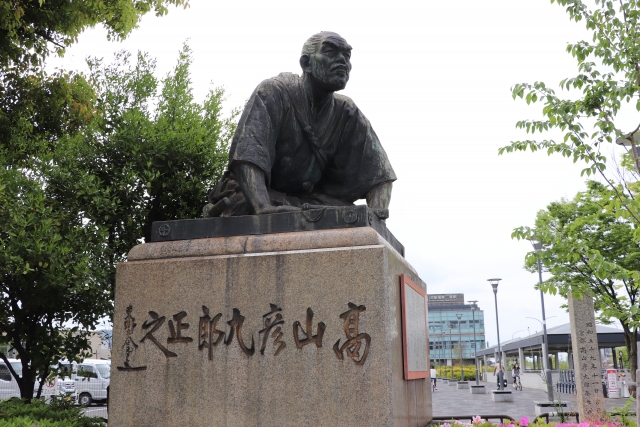
However, the Kurume Domain didn’t play a major role in the Meiji Restoration during which the New Government defeated the shogunate. This is because the domain had an internal conflict between its supporters. The domain even had complains about the New Government changing its policy to open the country. The government punished the lord of the domain and occupied Kurume Castle in 1871, which was the last time the castle was occupied.
